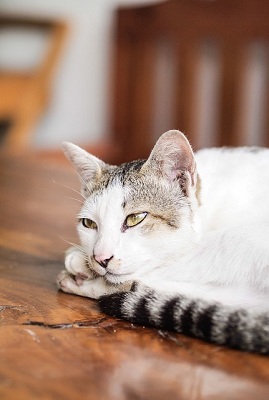Pain in Cats
Pain in Cats
Pain in cats is often underestimated health condition. It has been long believed that animals do not feel pain like humans. This misunderstanding leads to surgical intervention without applying anesthesia and lack of follow up after treating injuries regarding pain. However, several studies have shown that cats feel pain in similar situations as humans. And feeling and suffering from pain, especially for a long run, presents a stressful situation that can weaken the cat immune system and deteriorates further cat’s health. For this reason, medical experts suggest paying attention how a cat behaves after surgical intervention, dental surgery, broken bones, or some other evident illness. In the case of any sign of pain, they recommend consulting a veterinarian about further treatment. Unfortunately, in a majority of cases, the signs of pain are not obvious. Cats are known for their ability to hide pain and appear as nothing is going on. This behavior is instinctive because their ancestors learned to hide their vulnerability from other predators and even from their pack. Namely, other cats were not happy to hang around with a vulnerable cat that can pull the whole pack down and make them all more exposed to danger. Even though cats are good at hiding pain, experts advise us to watch carefully the cat’s behavior and habits. If a cat usually sleeps 12 hours and suddenly change the habit, prolonging it to 16 hours, then it can be a sign of illness. To learn more about pain in cats and how to spot the signs, the article “10 Signs That Your Cat May Be in Pain” gives us the list of potential symptoms.
Pain in Cats
Increased vocalization
Licking a particular area of the body more than usual
Appearance of the nictitating membrane (the third eyelid)
Hiding
Panting or open mouth breathing
Irritability or grumpiness (from a cat who normally isn’t that way)
Lack of appetite
Change in mobility (signs of limping or reluctance to move)
Change in litter box habits
Increased clingy/needy-type behavior
However, to discover the symptoms of pain in a cat, we just need to be more aware when facing subtle signs of unusual behavior or changes in habits. If a previously active cat suddenly avoids climbing perches or some other places, then it can suggest problems with joints such as arthritis or broken bones. To discover pain in cats on time, we need to know well our own cat and her habits. Only then we will be able to notice the subtle signs and act accordingly.










